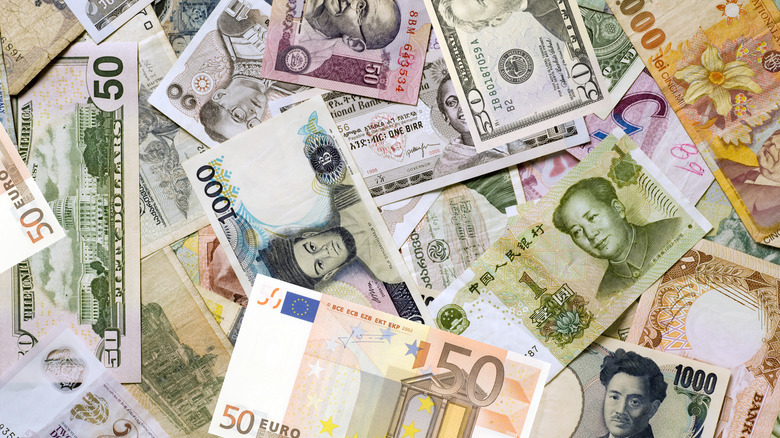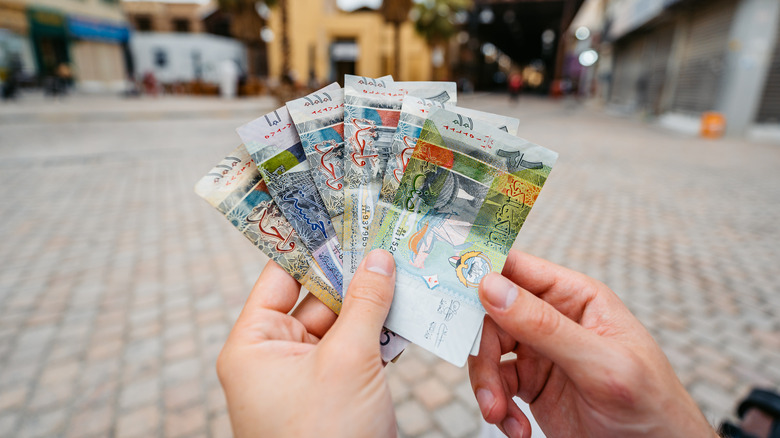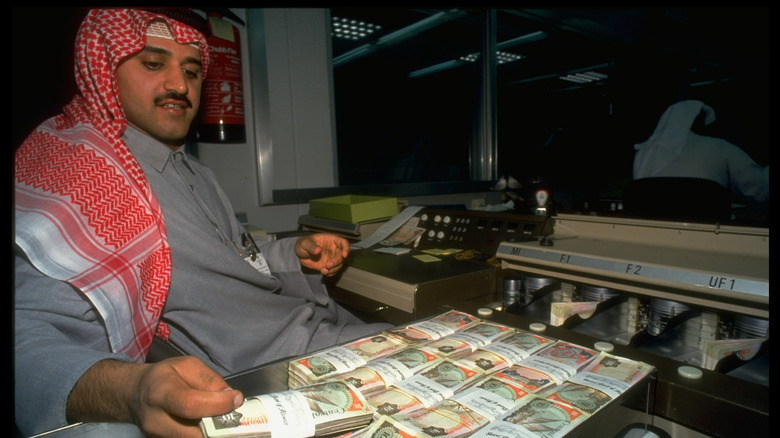The Most Valuable Currency In The World Isn't In The US Or Europe
As of July 3, 2025, the Kuwaiti dinar trades at $3.28 based on mid-market rates, making it the highest-valued currency in mainstream foreign exchange charts. It is at the top of Wise 2025 "strongest currencies" list and it ranks ahead of the Bahraini dinar, Omani rial, British pound, and Swiss franc. This high exchange rate shows how many U.S. dollars you will use to buy one Kuwaiti dinar but it is not a representation of the country's overall economy. Still, the dinar has held this position steadily over the past year.
Kuwait is able to keep its currency strong because its economy depends heavily on oil. According to the U.S. International Trade Administration, about 90% of the government's income comes from oil sales. This steady flow of dollars helps the country stay stable, even when oil prices go up or down. Much of the extra money goes into the Kuwait Investment Authority (KIA), the country's wealth fund.
Also, Kuwait's currency stays stable in part because of how the central bank manages it. Since May 20, 2007, the Kuwaiti dinar has been tied to a group of major global currencies asides just the U.S. dollar. This mix — often called a currency basket — reduces risk and controls inflation from imports. With strong reserves and a wide safety net of foreign assets, the dinar remains the most valuable currency in the world, much stronger than the U.S dollar.
Why Kuwait has the world's priciest currency
Kuwait gets about 90% of its revenue from selling oil, but this makes its economy vulnerable to specific policy changes. In late 2023, OPEC+ asked members to cut oil production, and Kuwait reduced its output by 135,000 barrels a day. That drop pulled the country's economy down by about 2.9% in 2024, per the World Bank. Yet, it didn't seem to have a lasting effect because, at the same time, loans to businesses climbed 4.7%, and big projects like the new Mubarak Al-Kabeer Port and Silk City kept people working. Those production cuts were set to end in May 2025, and the World Bank, as of April 2025, expected Kuwait's economy to bounce back by 2.2%, a noteworthy prediction as two of Europe's largest economies are shrinking.
Besides, Kuwait has deep savings to soften any downturn. Its Future Generations Fund, managed by the Kuwait Investment Authority, holds nearly $1 trillion in assets, per Reuters. Fitch Ratings says Kuwait's net foreign assets (what it owns abroad minus what it owes) will reach 601% of its Gross Domestic Product (GDP) in 2025, the highest among AA-rated countries. Meanwhile, the country's public debt was just 0.3% of its GDP in mid-2024, according to CEIC data. That means the government can use its savings instead of borrowing whenever oil income dips, a move that grows the strength of its currency.
Living with the most valuable currency
One Kuwaiti dinar buys a lot of foreign currency, and the government uses subsidies to keep prices so low that residents may not need grocery shopping strategies. Every Kuwaiti family has access to a ration card to buy staples — rice, sugar, cooking oil, and powdered milk — at token prices. Minced meat was added in 2024. Electricity costs households just 7 cents per kilowatt-hour, while unleaded fuel sells for about 28 cents per liter as of January 2025, even after prices rose in 2016. The 2024 to 2025 budget sets aside KD1.13 billion (about $3.6 billion), more than 4% of total spending, for energy and food subsidies. With cheap utilities, fuel and groceries plus a strong dinar, consumer prices rose just 3%, according to the International Monetary Fund (IMF) in December 2024.
However, the tradeoff for a strong currency in Kuwait tells in how much control the country has over interest rates. Recall that the currency is tied to several foreign monies, and the U.S. dollar is the biggest of them since 2007. This means the Central Bank of Kuwait would move in step with America's Federal Reserve. Before December 2024, the bank's main lending rate was 4.25%; after the Reserve lowered its own rate, Kuwait trimmed its rate to 4%, matching similar cuts in Saudi Arabia, the UAE and Qatar. Staying in rhythm keeps investors calm and the dinar steady, but it also means Kuwait's borrowing costs rise or fall whenever Washington decides.


